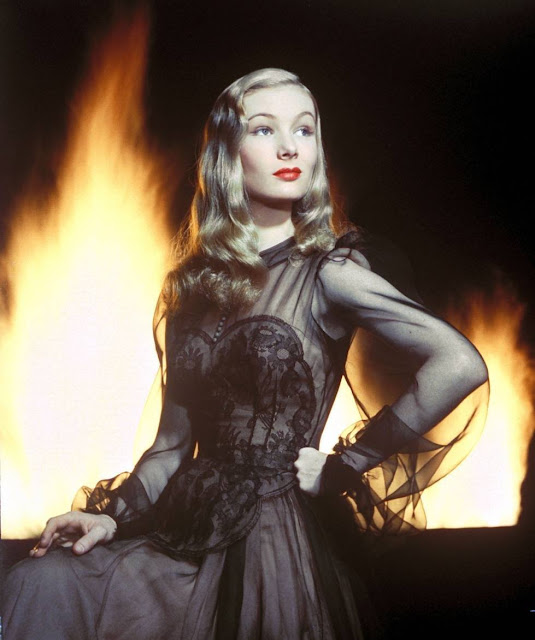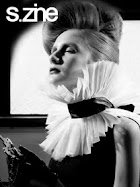三年來首次接受專訪 ,以下轉貼部份內容來自~
The Future Of Fashion, Part Three: Hedi Slimane
Interview & Photo by Style File
Written by Dirk Standen
How do you think technology-tweeting, blogging, social media, ect.- has affected fashion? For better or worse?
It has affected different aspects of fashion tremendously. From commentary to fashion design, communication, and distribution.
The fashion Internet community is like a global digital agora tweeting passions and opinions. Anyone knows better, and each one is a self-made critic.
This is a fascinating idea, as I always favored amateurism (”the one that loves”) over professionalism, attraction over experience. It obliges anyone in the industry to think in a fresher way.
Of course, it is hard to say if any “authority,” someone like Suzy Menkes, might one day come out and use digital means to lead with integrity, enough background, outside of any conflict of interest.
On a design perspective, it has allowed any young designer or indie brand to get an instant audience, if used with wit and invention.
I am not quite sure of the future of retail as we know it. This is a truly important thing, maybe the most important one, as it might already mean there is nothing standing between the design and an audience/consumer.
Finally, the better and the worse have always been part of fashion, with the Internet only magnifying it and creating a joyful and noisy digital chaos.
The bottom line is that any note can create music. It is only a matter of taste.
Can you envision a day when digital media will replace magazines?
I totally do, and I don’t see it as a bad thing. You don’t fight but embrace a natural evolution, really, and try to figure out how it would reveal new creative fields within global access, and multimedia features.
The Web site magazine will come way before the print version in the next decade. I don’t see any way around it, really. With the rise of the Internet, fashion did become part of the global entertainment industry in the last ten years, and will follow the digital evolution of the music or film industry.
Besides, immediacy is better than old news. The “manufacturing” process of a magazine is far too long for this world, for the definition and idea that fashion is about “right now.” I guess it is more about “right now” now than ever before.
That said, fashion magazines, glossy magazines still use their Web sites for daily news and information only. I trust it might be interesting to invest strongly in art direction, besides hiring top editors, top photographers, and top models, which is hardly enough for Internet pages.
Quite certainly, the Web sites of the magazines will have to move away from the “blog” format and create an inspiring, tight template for their photo productions or editorial content, a Web site that has the [same feeling of] luxury and glamour as flipping through a heavy glossy magazine.
It is interesting to think how someone like Alexey Brodovitch would have investigated this medium to create typography and layouts in motion. It is now an open field for a new generation of editors in chief and art directors.
I hear one of the reasons for the lack of investment is advertising, although I trust advertising would follow immediately, if provided a reassuring image template for their costly ads.
I finally believe the printed magazine will then become a collector’s item, and hopefully a reference to be kept preciously.
Therefore, the commercial issues of advertising credits might move toward the Internet, [while] the most inspiring fashion stories could become exclusive to the printed collectible version.
Are you excited about some of the new digital developments—the iPad, better implementation of video, etc.? Do you think they will influence your work?
The iPad needs to catch up with Flash before I put a hand on it. This is really strange; I guess it is still in progress. Of course, this is only showing how many endless options are left wide open for Web sites, and how it will change the entire industry. It is totally exciting. On a different note, I still think video is a specific tool and does not replace stills. It is yet another interesting image-maker.
What are the creative rewards of photography? How do they differ from the rewards of fashion design?
Immediacy, independence certainly matter. I don’t need to be stuck with my flannels in a studio; my team is not permanent, so that I don’t have to deal with too many headaches and get distracted. But that said, I do love flannel, so I photograph it. This is why I organically went from fashion design to fashion photography, ending up using the Internet to pursue my ideas for fashion. It is like switching to a different language—not that it affects anything I have to say.
Between menswear and womenswear, resort, pre-fall, and ready-to-wear, some designers are designing eight or more collections a year. Is it possible for a designer to be creative under those circumstances?
Designers end up needing a full-blast studio for this sort of thing, which is totally absurd. I also don’t understand what the hell people do with all those clothes. Less would be better, and shorter collections. Again, e-commerce might change this costly and overwhelming fashion avalanche.
The silhouette you proposed for men at Dior Homme is in many ways still the dominant silhouette today. Are you surprised by how long it has lasted? Do you see it changing?
I started to work on my silhouette since the end of my Saint Laurent years, when I had the option to pursue my own style. I also started it because it was the only thing that would fit me, to be totally honest.
I became very repetitive with it over the years, as I was trying to define it accurately.
I always thought it was all about repetition, and I became extremely stubborn despite my opponents and the natural aim of the fashion industry to look for something new each season. I never wanted to please, as long as I could follow my beliefs. I always and only thought about my own time and the birth of an entire generation.
I heard so much about my proportions, and how absurd and unsuccessful, for instance, my skinny jeans and silhouette would be. I also heard about my lack of definition in masculinity, as I was aiming to try another definition. I also was questioned about my attraction to music, as I still believe there is no fashion without music. Marie Antoinette knew better when she fetched Gluck to Versailles, to try her new wardrobe on the dance floor. Nothing will ever change. Fashion = music + youth + sex. This is what my menswear and my style were always about.
Besides the proportions, it was about an allure, a certain movement.
I always believed the way men or women wear clothes (le porté, in French) defines fashion, and funnily enough, through history, furniture design.
So that it was never a “fashion comment,” as I was interacting directly, and still do on my own, with unknown musicians, artists, street casting for my shows. It was not about doing punk rock or metal when punk rock or metal had no relevance to the moment. My fashion and my style were like a random and sometimes intimate diary. Living in Berlin, I interacted with the music scene at a time when Berlin was aiming to set up an abstract and ethereal digital tone; my years in London happened to be the time when a new indie scene emerged among my friends. There were no clothes available around, so I designed them for the rest of us. These are the clothes we wanted to wear, and these are the clothes, allure, and style that ended up my own.
The rest might by now be common knowledge. With Berlin becoming suddenly popular and the global indie scene explosion a few years after, my style spread accordingly.
Funnily enough, when I decided to put design on hold for a minute, it was all about how skinny was dead and how men would suddenly flip in the other direction. It ended up the contrary.
I just finished a report on this emerging movement I ended up being connected to called Jerking. It was born in Long Beach, Los Angeles, in late 2008 among black teenagers in high school. They call it the Skinny Jeans Movement and have songs like “I ROCK SKINNY.” They developed this creative community through social sites and found their style on the Net. The skinny look came first among them, then the music, inventing a broken-beat dance. As always, the music majors just spotted them and signed them one after the other. It is a really refreshing and joyful rap collateral movement. The project I did on jerking, jerk crews, and musicians will be online in a few days I guess, and Vogue Hommes Japan will publish some of it this month, as an introduction I guess. This movement is only starting, really, and it might spread over the global high school, with an avatar of my style in the broadband.
Now, from the streets to fashion week: I still have loyal assistants at Dior. I guess my shows had a specific atmosphere. Despite the necessary press rhetoric, the silhouette is still there, but more so my style and semiotic, used as an open-source commodity. It is quite convenient for me, as I don’t have to be in the kitchen anymore.
So, to answer your question, surprised I might have been, but is it going to change anytime soon? Time will tell.
What excites you about the future, personally or in terms of fashion in general?
Everything, really. It is a fantastic time—difficult, of course, to some degree for many, because it is truly a revolution, led by the Internet, a digital revolution. Distribution and communication are in an ongoing fast-forward mutation. There is also a generation gap, which creates an acceleration of the treadmill for some. Not everyone is accustomed to this Internet world, which is understandable. It is just a different landscape, and as much as one might pretend to keep up, it is a tough one to follow: the freeway toward the musical chairs.
I trust fashion will invent new models, shortcuts, somewhere in between luxury (analog) and fast retail (digital).
In front of a beyond-informed audience and new generations being born with a wireless processor instead of a brain, it will be about having clear commitments and keeping an original voice no matter the scope and scale of fashion developments.



















































